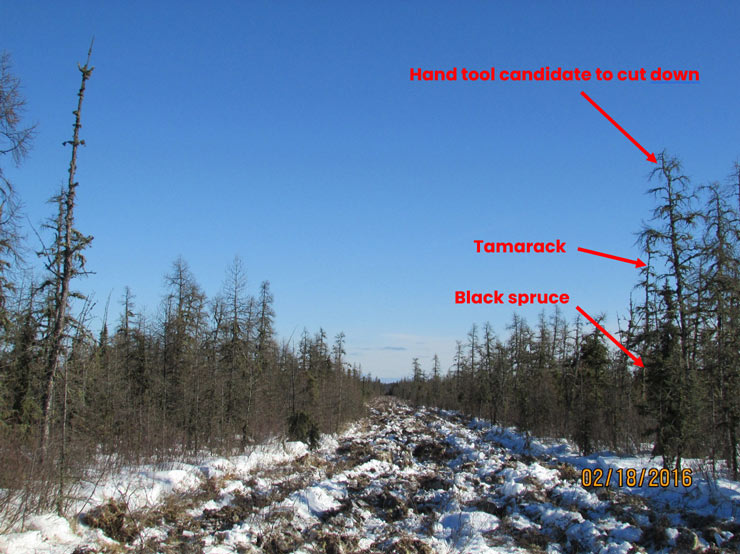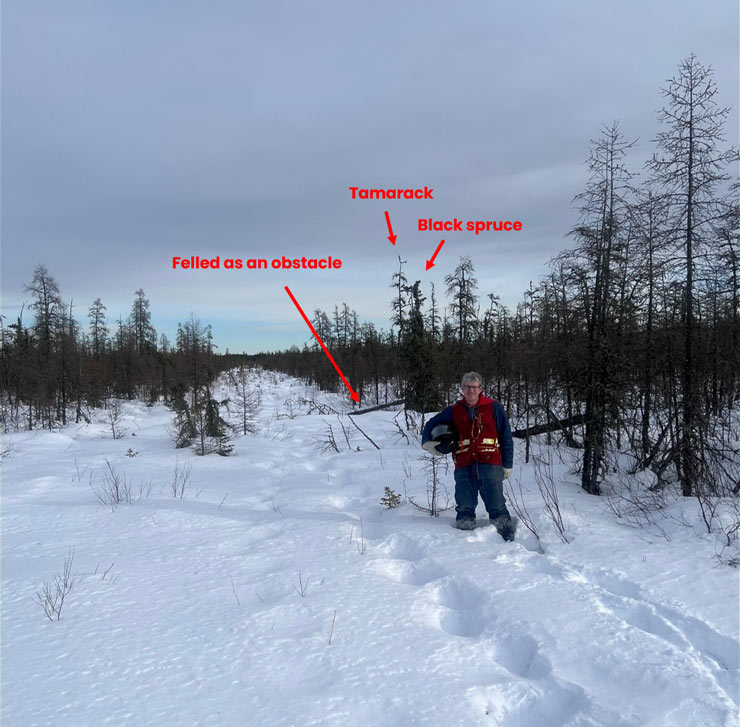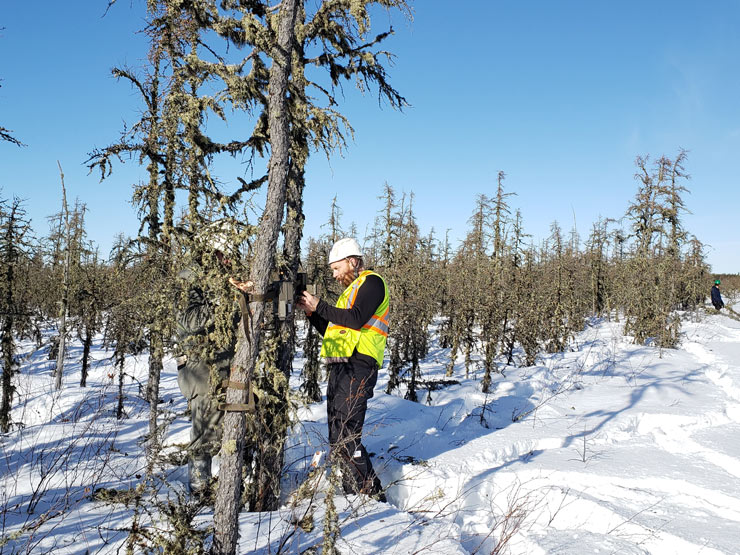When good is not good enough…
In terms of a productive forest site, where value is measured in sawlogs and pulpwood, this setting is not a forester’s dream. In fact, this Treed Fen lies several hundred metres from the nearest upland site capable of producing the more highly desired commercial timber products. Nonetheless, this wetland ecosystem is critically important habitat to the fauna that periodically leave these areas and visit the upland forests that foresters are more familiar with. And in this case, the animal of interest is the Woodland Caribou (Rangifer tarandus caribou).

Figure 1. Breaking the frost on a treatment site for afforestation, using Reclaimit’s proven Winter-reforestation solution, February 2016.
This narrow 7 m wide corridor has remained in a deforested state for nearly 40 years. To change that condition drastic actions were taken. By treating it in a single pass rather than preparing the site in the winter and returning in the summer to reforest it, features such as these are prepared for reforestation with a dozer and an excavator, and concurrently planted with ecologically suitable plants.

Figure 2. As noted in the tracks of a woodland caribou, the 2016 legacy seismic line is still of interest to the resident wildlife, February 2023.
So yes, one can successfully establish tamarack (Larix laricina), black spruce (Picea mariana), and bog birch (Betula glandulosa) in Treed Fens. And although better seen in the summer, the results of the treated site are very promising when compared to the undisturbed background forest, because the caribou-friendly seedling survival nears 100%, and the vegetative species, structure, and age diversity abounds.
Alas, the work misses the mark if one looks beyond the plant survival and performance, because upon a closer look, the other set of tracks in the snow belong to the woodland caribou who are still choosing this route of travel. And if they are using it, so are their elusive predators, those wolves, bears, and cougars. So, there are changes we must make to realize true success!! Because just like adding the letter-S to the word “Result”, a restored forest must supply multiple benefits.

Figure 3. Setting up wildlife cameras to equip ourselves with better knowledge about how to improve the outcomes of environmental restoration solutions.
When good is not good enough…
More themes remain for me to revisit, and many more new ideas await my discovery as I explore the exciting world of Reclaimit’s forest remediation and reclamation services, and travel across the provinces of Canada and around the world in project-related adventures. Have a question about my blog articles, reclamation services, or have a forestry-related question? Click here to drop me an email!
Intrigued by the habitat restoration question? You may also like our article about how we conduct Forest Land Reconnaissance – For Caribou Habitat Restoration in Northeast Alberta, Canada.



